Australian Tropical Rainforest Plants - Online edition
Zanthoxylum brachyacanthum F.Muell.
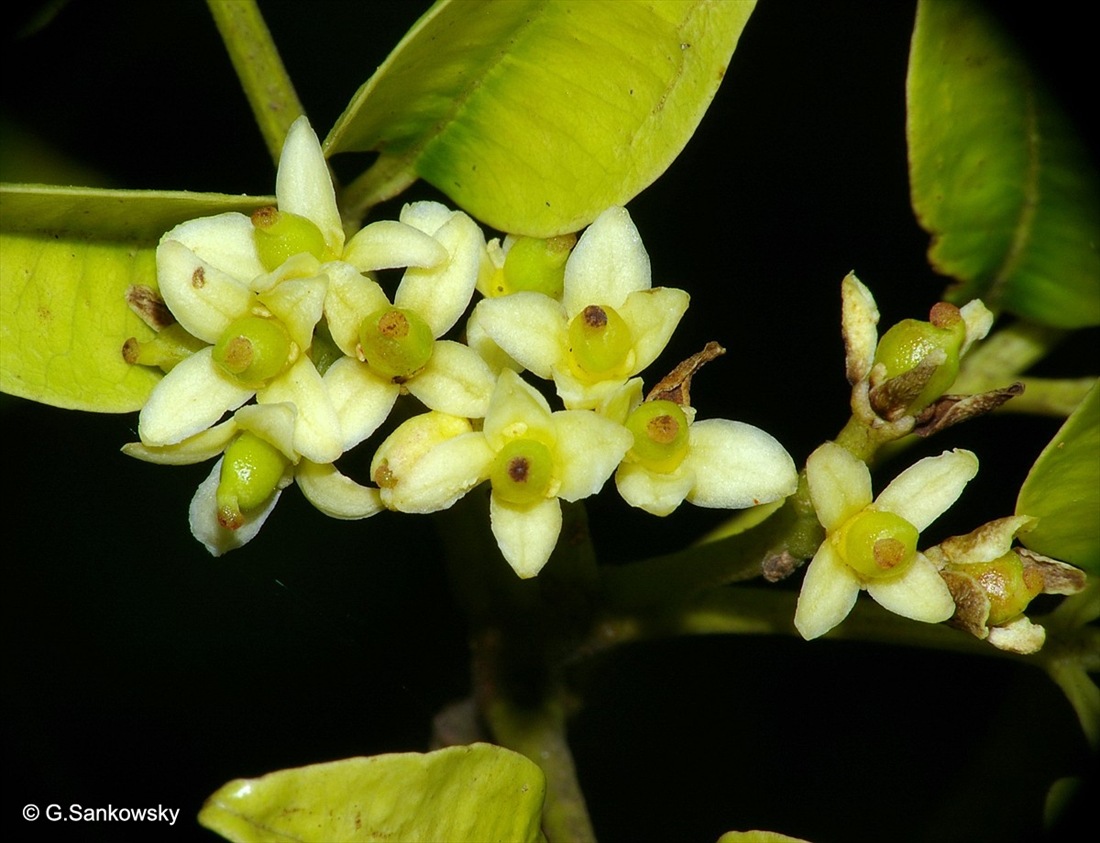




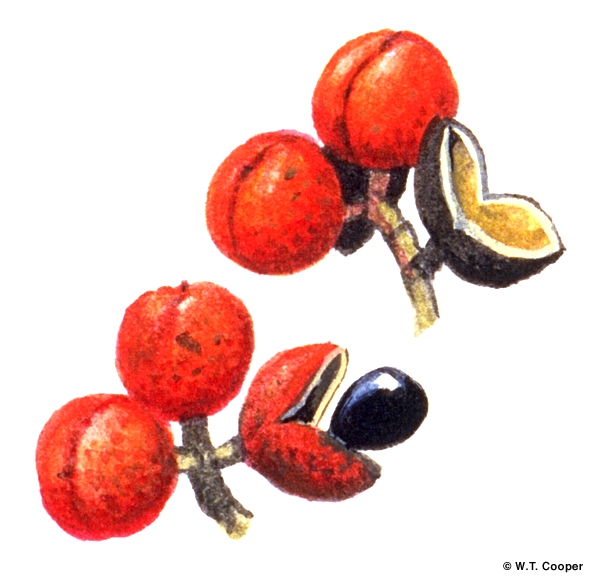
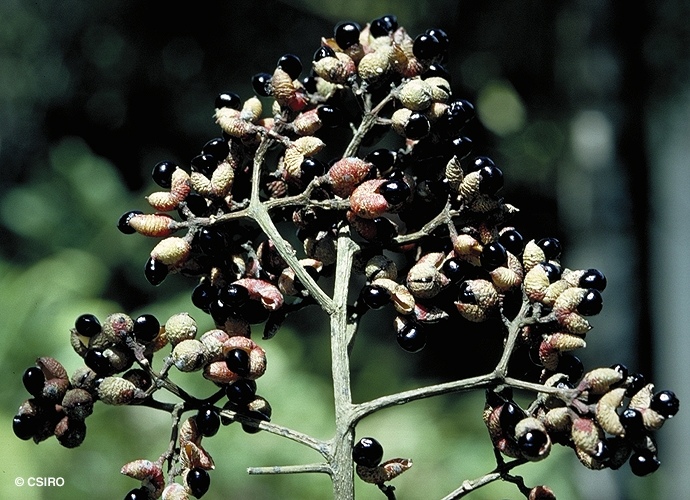

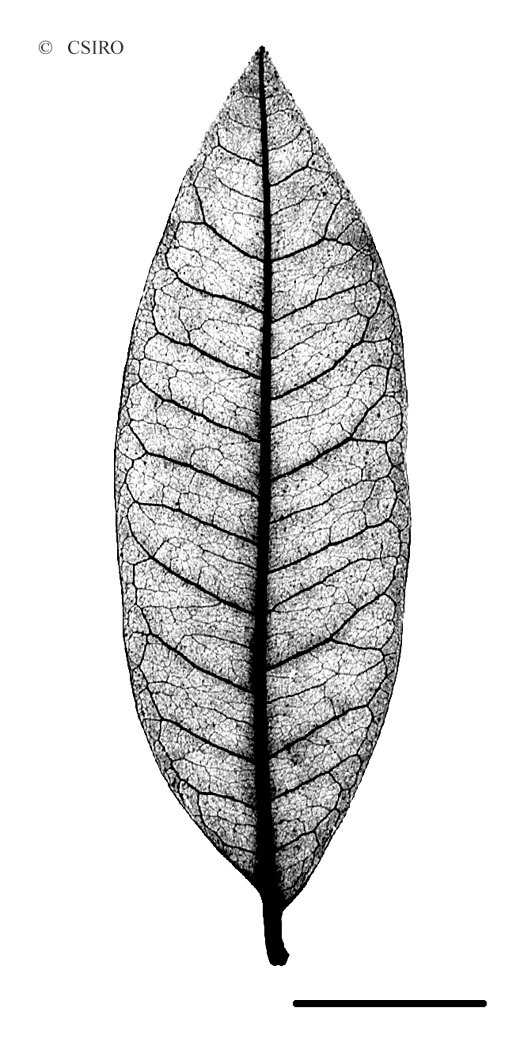
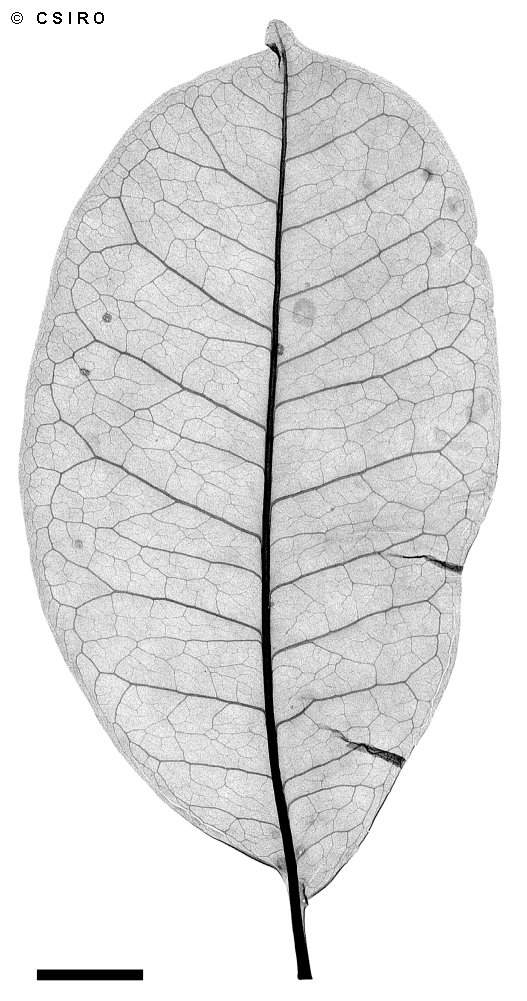

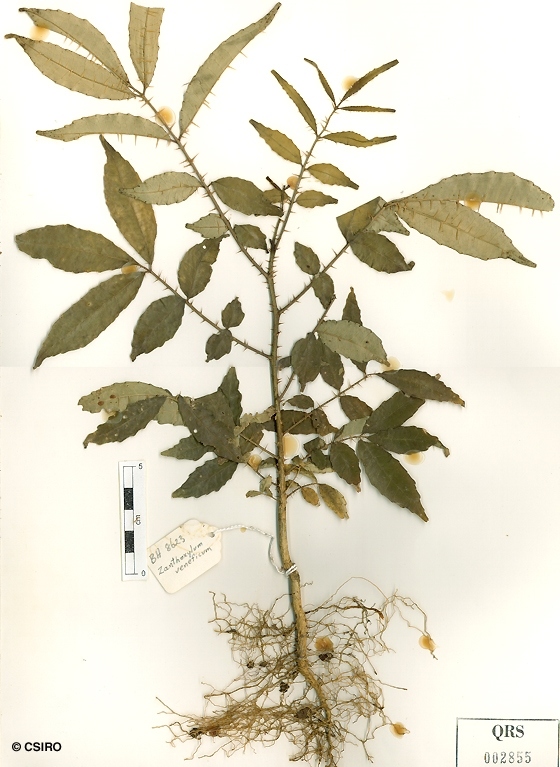
Mueller, F.J.H. von (1857) Transactions and Proceedings of the Philosophical Institute of Victoria : 65. Type: In the Araucaria forests of Moreton Bay. Hill & Mueller.
Yellowwood, Thorny; Thorny Yellowwood
Older stems with broad-based conical spines each about 5 mm long. Cambial layer quite yellow. Dead bark rather corky.
Leaf bearing twigs clothed in scattered sharp spines or unarmed. Compound leaf rhachis channelled on the upper surface. Lateral veins usually forming loops inside the blade margin. Leaflet blade margins recurved at the apex. Leaflet blades about 3.5-16 x 1.5-6 cm; apex acuminate but often ending in a large gland giving it a minutely retuse appearance; on leaflet stalks about 2-6 mm long and channelled on the upper surface. Midrib depressed on the upper surface. Oil dots quite large, sparsely scattered and appear to be on or close to the lower surface of the leaflet blade just beneath the epidermis. Pulvinus present on the terminal leaflet but not on the lateral leaflets.
Inflorescence about 15(-25) cm long, shorter than the leaves. Flowers borne in tight clusters, each flower about 5-6 mm diam. Sepals about 0.5-1 mm long. Petals about 4-6 mm long. Male flowers: stamens 3.5-8 mm long, inserted outside the disk, anthers about 2.5-3 mm long, rudimentary gynoecium absent. Female flowers: Calyx lobes somewhat fleshy, each lobe about 0.8 x 0.8 mm; petals fleshy, about 3.5(-5) x 1-1.5 mm; staminodes 4, to 2 mm long or lacking; disk lobed, about 1-2 mm high; ovary about 2 x 1 mm consisting of one carpel; style short, somewhat obliquely attached to the apex of the ovary; stigma globose; ovules 2, pendulous.
Fruits brown, glabular, about 7 x 8 mm. Seed enclosed in a black sarcotesta. Seed + sarcotesta about 5-6 x 5 mm. Seeds globular-ovoid about 5 mm diam. Cotyledons about 3 x 2.5 mm. Radicle about 0.5 mm long.
Cotyledons oval or obovate, about 4-6 mm long. Oil dots large, more frequent near the margins. At the tenth leaf stage: leaflet blades elliptic, apex acuminate and emarginate, base cuneate, glabrous on the upper surface, margins crenate, each tooth with a single large oil dot at the base, oil dots absent elsewhere; thorns produced on the compound leaf axes, on the midrib on the underside of the leaflets and along the stem. Seed germination time 52 to 59 days.
Endemic to Australia, occurs in NEQ, CEQ and southwards as far as north-eastern New South Wales. Known from a few localities at altitudes between 550-1100 m. Grows in monsoon forest and vine thicket and as an understory tree in well developed rain forest on a variety of sites.





